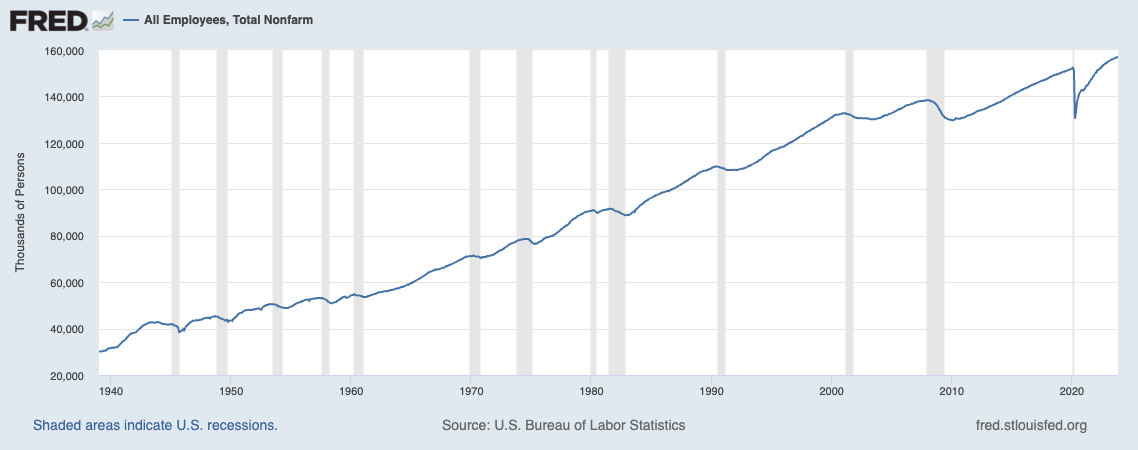You may have missed the most important data point in today’s Employment report.
It wasn’t that Nonfarm payrolls increased by 199,000 in November, somewhat higher than expected; nor was it the unemployment rate, which fell to 3.7% in November, from 3.9% in October; nor was it that Wages continued to rise at a modest pace, with average hourly earnings up 0.6%.
It was that 157.087 million people are employed full-time in the United States.1
This is significant for two reasons:
First, it is a full 5 million more people working today than in January 2020, just before the pandemic struck. That is a significant number to recall whenever people posit we either are in, or just were in, or are about to tumble into a recession.
Secondly, it is useful to provide context to help avoid denominator blindness.
Consider that about 3.6 million people quit their jobs each month in the US. Some retire, take a sabbatical, go on leave, switch to another job, or join the choir invisible. Another 3.6 million start a new job; they begin working after graduating school, or return to the labor force, or leave one job for a new one. The monthly employment report is the difference between those two groups of nearly 4 million out of 157 million people.
Hence, in the fullness of the data, 199k out of the net sum between ~4 millionish versus ~4 millionish out of a total of 157 million is more or less a rounding error.
This is why the ongoing trend matters – are we creating jobs or losing jobs each month? – but most months, the specific number is more or less a rounding error.
This is not a popular opinion.
Tell me how you feel about this analysis, and I can tell you what is in your portfolio, how bullish or bearish you are, and how you are likely to vote next November…
Previously:
NFP Day: The Most Over-Analyzed, Over-Emphasized, Least-Understood Data Point (February 4th, 2011)
Contextualizing the NFP Data (April 1st, 2011)
An Unusually Unusual NFP Payroll Day! (June 3rd, 2011)
THE MOST IMPORTANT EVER NFP blah blah blah (June 7th, 2013)
“What’s Your NFP Number?” [Don’t have one] (August 2nd, 2013)
NFP: Pay No Attention to the Statistician Behind the Curtains (January 10, 2014)
Don’t Suffer From Denominator Blindness (October 14, 2015)
__________
1: All Employees: Total Nonfarm, commonly known as Total Nonfarm Payroll, is a measure of the number of U.S. workers in the economy that excludes proprietors, private household employees, unpaid volunteers, farm employees, and the unincorporated self-employed. This measure accounts for approximately 80 percent of the workers who contribute to Gross Domestic Product (GDP).



